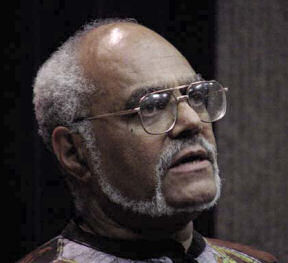Math as a Civil Right
Voting rights advocate calls for mathematics literacy
- More than 2 years ago
Mathematics literacy is a new civil rights battleground, according to the renowned activist and political organizer Robert Parris Moses. Using the same ideas and methods that he once used to fight for voting rights in the South, Moses is working to increase access to quality mathematics education through the Algebra Project, a nationwide program that he founded.

Before the 1965 Voting Rights Act, many Americans were excluded from participation in their country’s democracy through laws that made literacy a requirement to vote. Today, Moses says, many young people are excluded from full participation in the country’s economy because they lack mathematical literacy.
In the early 1960s, he worked in the Mississippi Delta as part of the Student Nonviolent Coordinating Committee, mixing with sharecroppers and encouraging them to demand the right to vote. “Now we’re trying to build the same kind of momentum behind their grandchildren,” Moses says. “We need to get them demanding what everyone says they don’t want.”
The ubiquity of computers makes abstract, quantitative reasoning skills critical to a wide range of job opportunities. “Information age technology put math on the table as a literacy requirement in the same way that industrialism made reading literacy a requirement,” says Moses. For that reason, he says, the country needs to raise math education standards for all students.
Moses founded the Algebra Project in 1982 with funds from a MacArthur Foundation “genius grant” that he received for his work on voting rights. Initially, he focused on the goal of making sure that all students learn algebra, which he calls “the gatekeeper of citizenship.” When students learn algebra, he says, they make a leap in their ability to manipulate abstract symbolic representations.
Over time, the Algebra Project has developed curricula and methods for teaching algebra in the late middle school and early high school grades. Moses and his fellow project leaders now run professional development programs for teachers around the country. To encourage student and parent commitment, project leaders conduct community meetings at schools taking part in the program. With support from the National Science Foundation, General Electric Foundation’s Math Excellence program, and the Marguerite Casey Foundation, the Algebra Project currently has a $1.7 million budget.
The Algebra Project is now working with a team of research mathematicians and educators to develop a curriculum for college preparatory math. It uses an experiential approach to introduce new concepts through concrete events. For example, to understand how to represent motion on a graphical plot, students take a subway or bus trip and then draw a “trip line” to represent the experience.
In Jackson, Miss. and Miami, Fla., Moses has started a program for ninth-graders who are performing in the bottom quartile of their peer group. Students commit to spending 90 minutes a day in math class throughout their four years of high school, including six weeks each summer. In 2003, the most recent year for which data are available, 56 percent of students in Jackson who participate in the Algebra Project passed the state algebra test, compared to only 38 percent of their peers who are not taking part.
Some alumni of the Algebra Project are now campaigning for math literacy by working at the community level to increase students’ interest in math. Applying their efforts both within and outside schools, they aim to encourage students to see math as “cool” and as essential to future success. They have now formed a separate organization for this work, the Young People’s Project, which has received a major grant from the National Science Foundation. To develop a culture around learning that mimics the culture of community-based basketball, the group is starting competitive math leagues in urban and rural communities.
Moses spends most of his time on grass-roots efforts, teaching children and organizing communities, but he also advocates for change on a national scale by encouraging schools and families to demand quality mathematics education.
He believes that achieving such a goal might even require Constitutional change. In 1973, the Supreme Court ruled that the U.S. Constitution does not guarantee the right to an education, and that it is therefore not a violation of the Fourteenth Amendment’s equal protection clause for schools in poor areas to receive less money than schools in wealthy areas.
“Because of the deep racial and class divisions,” Moses says, “we’ve never been able to quite hold ourselves responsible for all the children in the country.”






